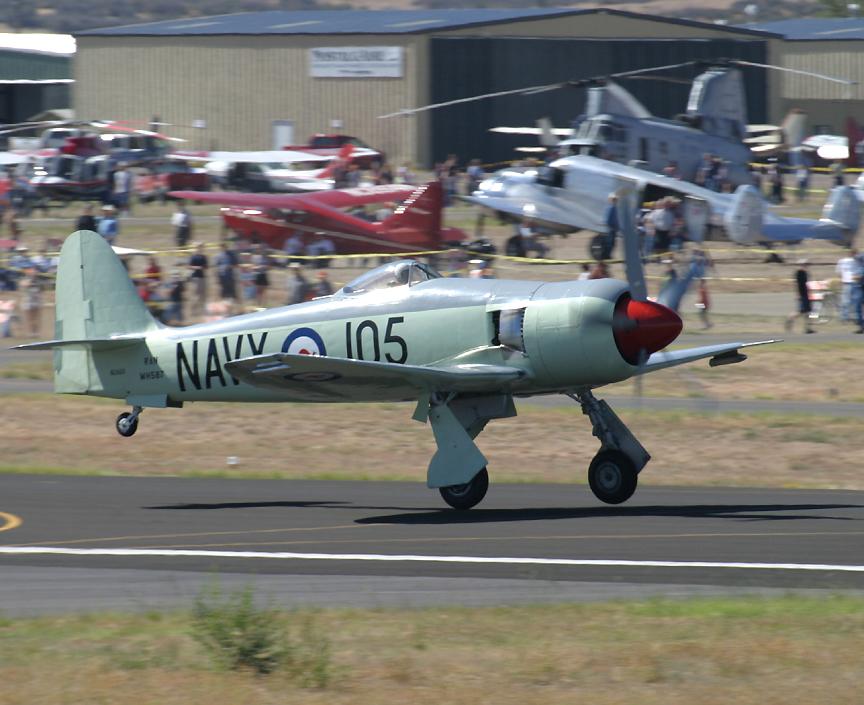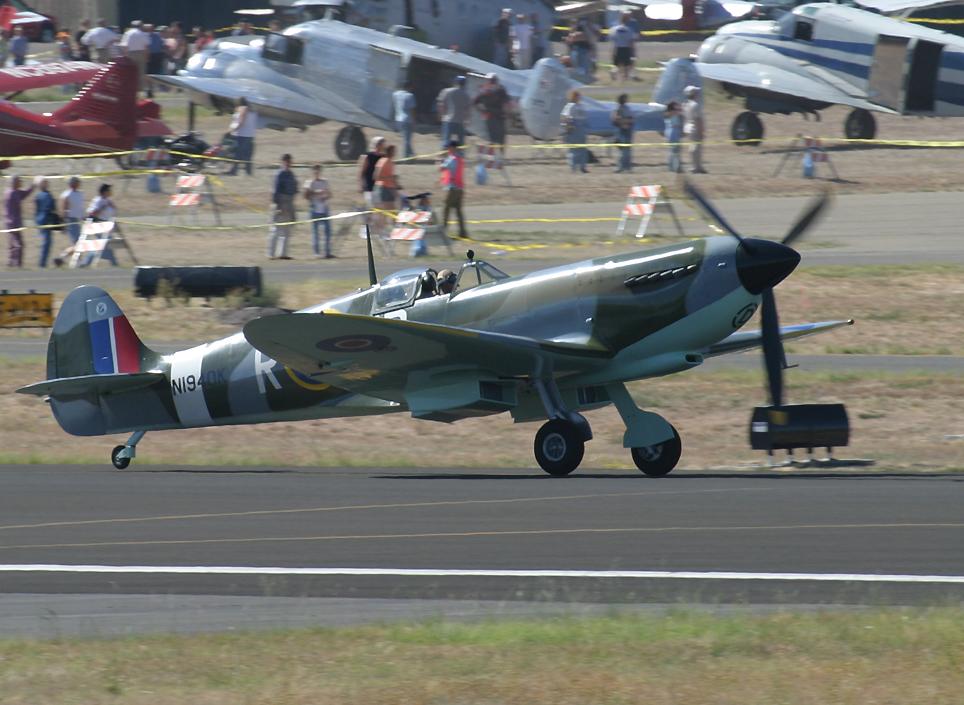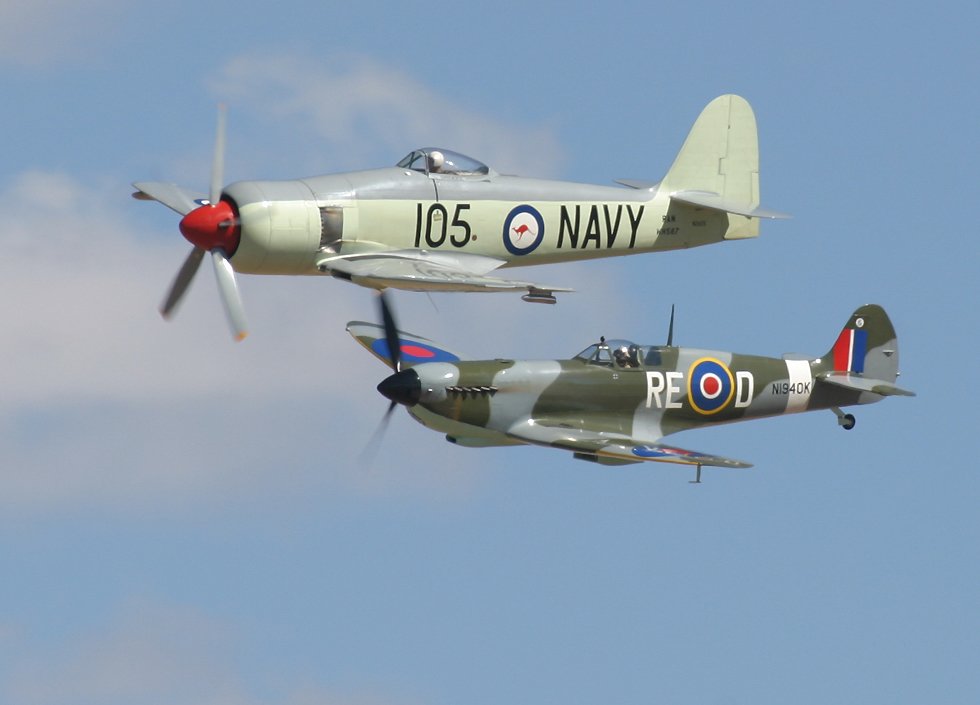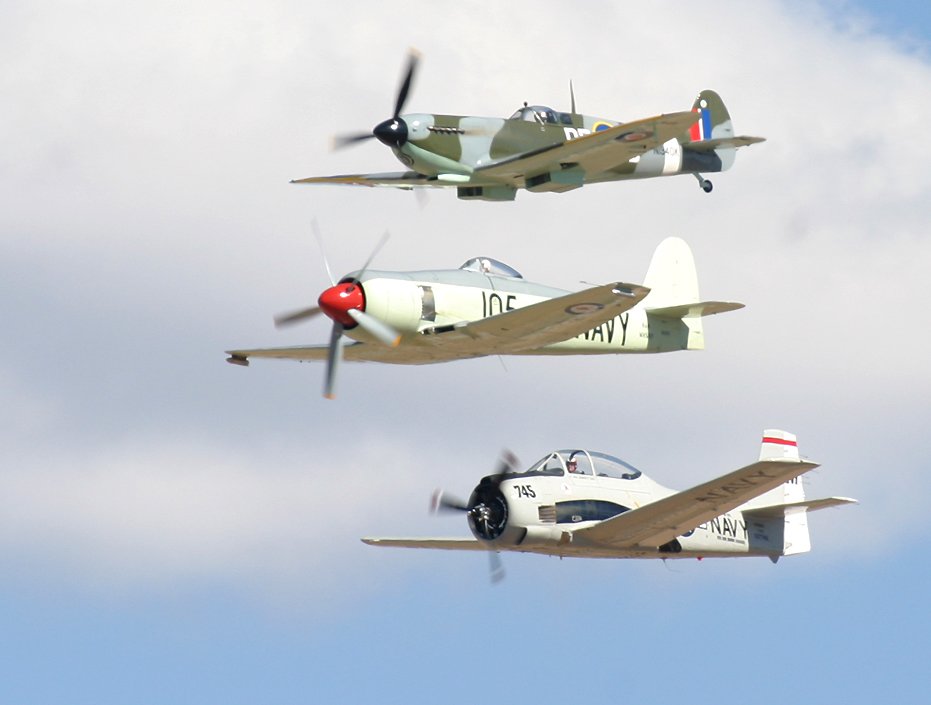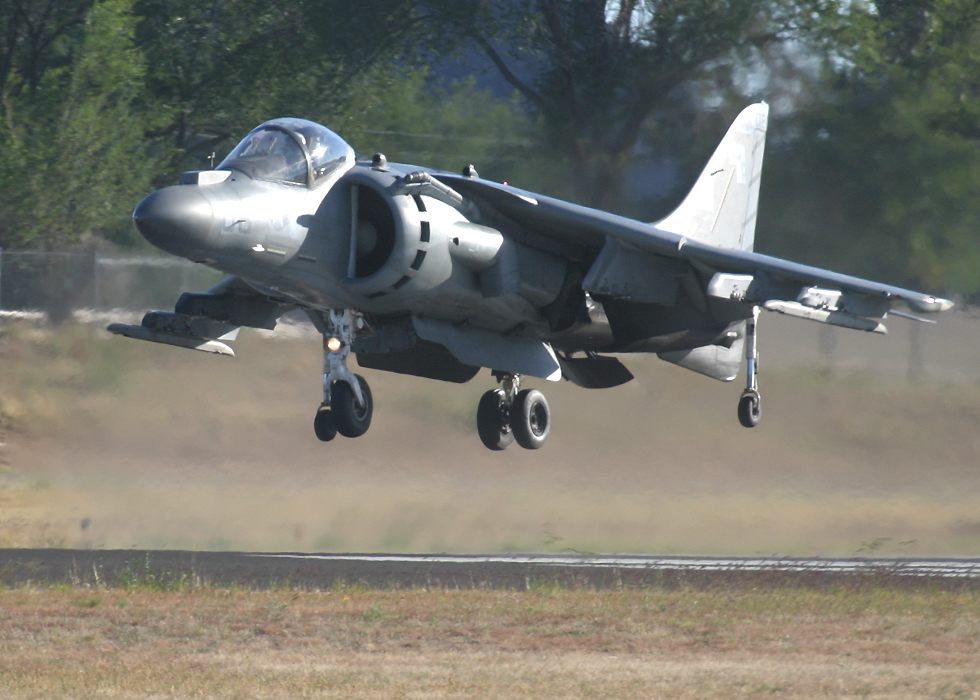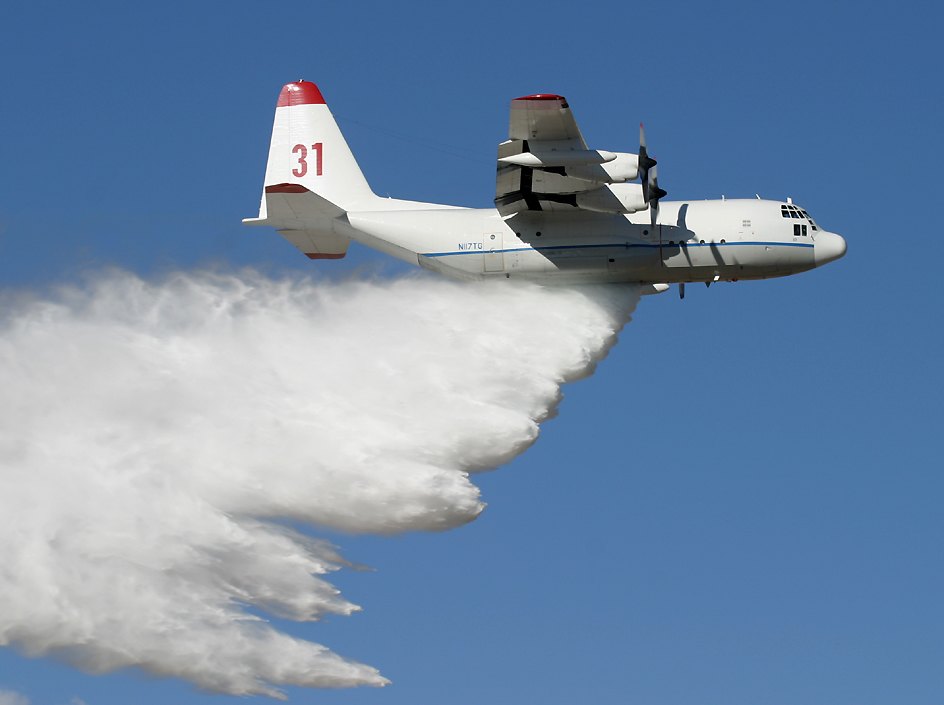Highlights of the 2004 Prescott Air Fair
|
The Sea Fury first flew in February of 1945 and entered service in 1948 as the Fleet Air Arm's last piston-powered fighter. Although it was soon outclassed by jets, the British continued to use it as their primary single-seat naval fighter until 1953, and it was exported to countries as diverse as Australia, Canada, Holland, Egypt, Iraq, Pakistan, Burma and Cuba. Here you see it in a US Navy "Tailhook Legacy Flight" with a rather more modern carrier fighter, an American F/A-18E Super Hornet (click the following links to open new windows with photos of the Super Hornet at the Dayton airshow and the Point Mugu airshow). |
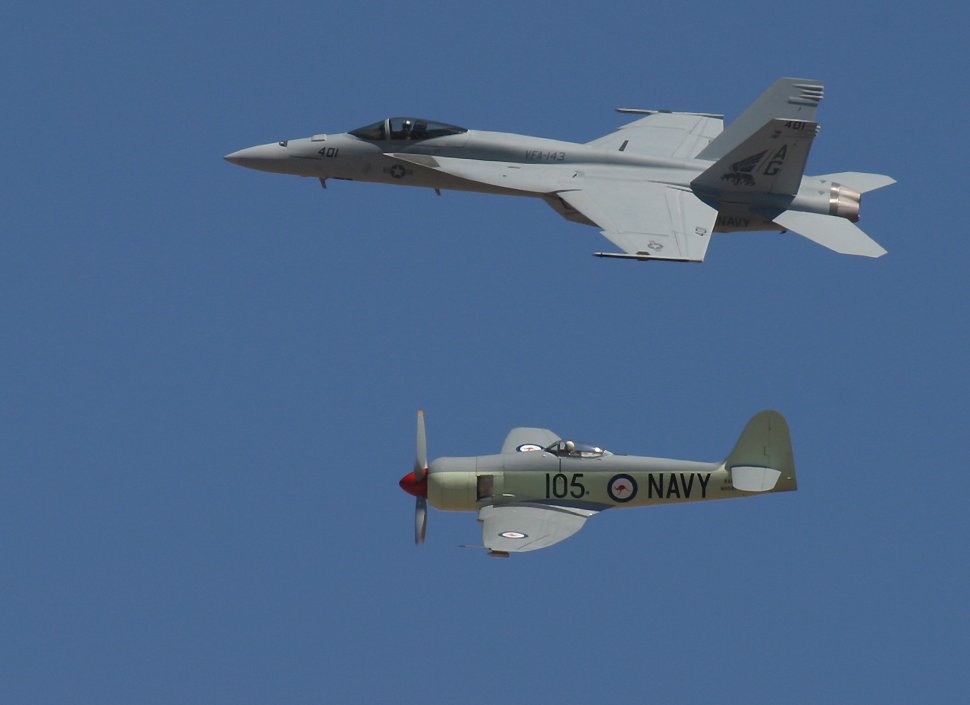 |
|
T-28 Trojans are just one of the military training aircraft which civilian warbird enthusiasts have been buying and flying in recent years. The T-6 Texans shown here were the primary trainers during world war two, and continued in this role until replaced by the Trojan. Technically, only the top one of these aircraft is a T-6 Texan; the middle one is in British colors, so it's more accurately called a "Harvard", and the bottom one is in US Navy colors, so it's an "SNJ". |
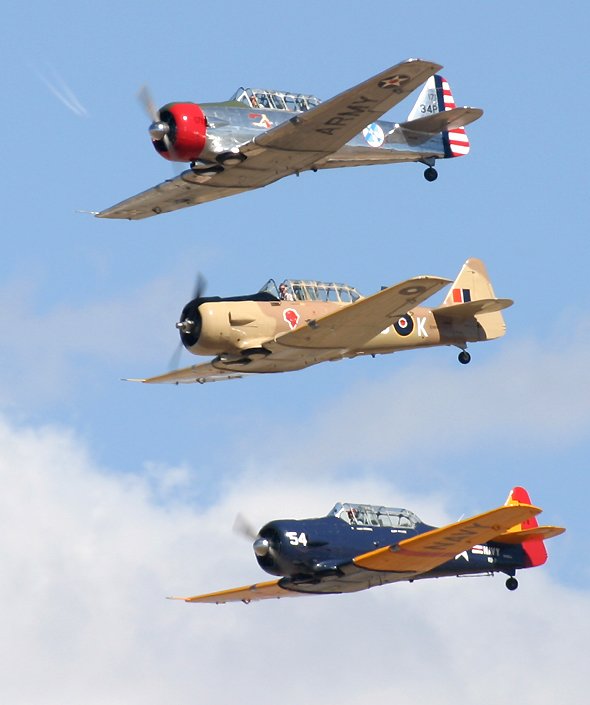 |
|
OK, here's the ultimate in trainers used by civilians - a pair of Czechoslovakian L-39 Albatros jets. The Albatros was the standard jet trainer for the Soviets, and some were even fitted with rockets and bombs on pylons like the ones you can see under the wings of the top plane. Although it's obviously expensive to keep a jet flying, there are over 200 of these planes flying in the United States and they're a common sight at airshows - one performer flies one called "Capitalist Pig", and there's even a civilian jet aerobatic team called the Patriots. |
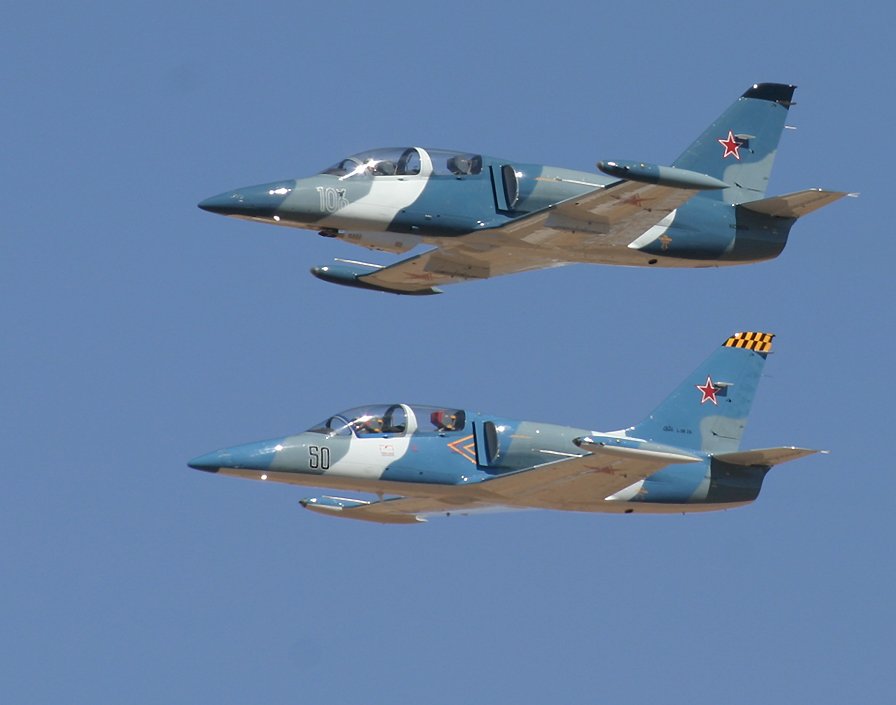 |
